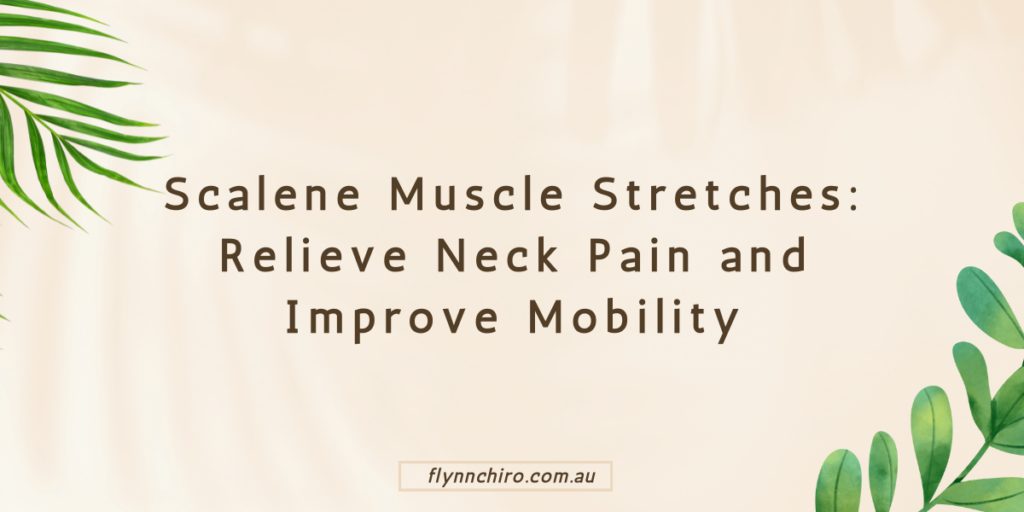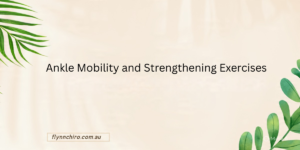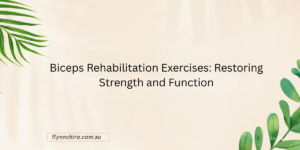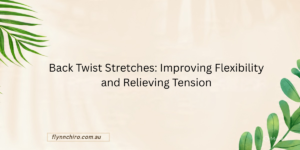
Scalene Muscle Stretches: Relieve Neck Pain and Improve Mobility
Neck pain is something I see often in my practice, and it can be more than just a physical discomfort—it can affect your daily life, from turning your head while driving to enjoying a good night’s sleep. Many times, the culprit is overlooked: the scalene muscles.
These muscles, located along the sides of your neck, are key players in supporting your head, assisting with breathing, and stabilising your upper body. When they become tight, overworked, or strained, they can lead to pain not just in your neck but also in your shoulders, arms, and even your back.
Stretching the scalene muscles—particularly the posterior scalene stretch, anterior scalene stretch, and middle scalene stretch—can make a huge difference in relieving tension and restoring flexibility. This article explores what makes the scalene muscles so essential, why they can cause pain, and how targeted stretches can help you find relief and stay active.
What Are the Scalene Muscles and How Do They Cause Pain?
The scalene muscles consist of three parts: the anterior, middle, and posterior scalene muscles. These muscles run from your neck vertebrae to your first and second ribs. While they play a vital role in neck movement and breathing, they are prone to tightness and trigger points.
When these muscles become tight, they can:
- Compress nearby nerves, causing tingling or numbness in the arms.
- Restrict neck mobility, making it difficult to turn your head.
- Refer pain to areas like the shoulders, chest, or upper back.
The good news is that with targeted care, including stretches and professional chiropractic treatment, these issues can be addressed effectively.
Targeted Scalene Muscle Stretches

Here are some simple but effective stretches for each part of the scalene muscles. Remember to move gently and avoid pushing into pain.
1. Anterior Scalene Stretch
- Sit or stand upright with your shoulders relaxed.
- Tilt your head back slightly while turning it to one side, looking upwards.
- Hold this position for 20–30 seconds, then repeat on the other side.
This stretch specifically targets the anterior scalene, helping to relieve tension that can contribute to forward head posture.
2. Middle Scalene Stretch
- Sit comfortably with your back straight.
- Gently tilt your head to one side, bringing your ear toward your shoulder.
- Place your opposite hand under your thigh to keep the shoulder down.
- Hold for 20–30 seconds, then switch sides.
This stretch focuses on the middle scalene, which is often strained by prolonged sitting or poor posture.
3. Posterior Scalene Stretch
- Sit upright and gently rotate your head to one side, looking over your shoulder.
- Tilt your head downward as if trying to touch your chin to your collarbone.
- Hold for 20–30 seconds and repeat on the other side.
This stretch targets the posterior scalene, which is commonly tight in individuals with upper back or shoulder discomfort.
Why Scalene Muscle Stretches Matter
Ignoring tight scalene muscles can lead to chronic pain, restricted movement, and even nerve compression. Regularly incorporating stretches into your routine can prevent these issues and keep your neck functioning at its best.
When combined with chiropractic care, these stretches can deliver lasting relief, helping you live a pain-free and active life.
How Scalene Muscle Stretches Help with Pain Relief
Stretching the scalene muscles can bring numerous benefits:
- Relieve Pain and Tension: Releasing tightness in the scalene muscles can alleviate neck, shoulder, and referred pain.
- Improve Neck Mobility: These stretches restore range of motion, making daily tasks easier.
- Support Better Posture: Stretching combats the effects of forward head posture and prolonged desk work.
A Chiropractic Approach to Scalene Muscle Tightness
As a South Yarra chiropractor, I often see patients with persistent neck pain caused by tight scalene muscles. Chiropractic care complements stretches by addressing the root causes, such as spinal misalignment or postural issues, that contribute to muscle tension.
In your consultation, I’ll assess whether your anterior, middle, or posterior scalene muscles are playing a role in your pain. Treatment may include manual adjustments to correct alignment, soft tissue therapy to release tension, and personalised guidance on stretches like the posterior scalene stretch or anterior scalene stretch to keep your progress on track.
If you’re struggling with neck pain or tightness and think your scalene muscles might be the issue, I’m here to help. Visit Flynn Chiro in South Yarra, and we’ll work together to uncover the root cause and create a plan that works for you. With the right care, you can move freely and feel your best.

Flynn Pettersson
I am committed to providing exceptional chiropractic care in Melbourne, focused on your health and well-being.

Flynn Pettersson
I am committed to providing exceptional chiropractic care in Melbourne, focused on your health and well-being.






